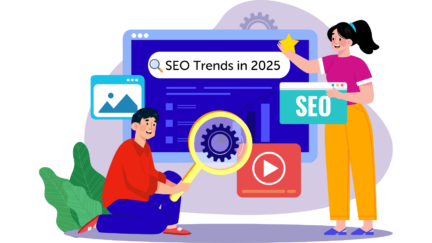How to build a successful Shopify website: A guide by PeoplePerHour freelancer Alicia
So you’ve built your dream Shopify store, but guess what? You’re not getting the conversions and sales that you were expecting. It’s not easy to know where to start when you’re setting up a Shopify store for the first time. How do you optimise your Shopify site for conversions? What’s the best way to drive traffic to your website? What are the best tools to integrate with your eCommerce site? Well, worry no more, because we recently spoke to Shopify expert, Alicia Thornthwaite and she shared some of her top secrets to make your Shopify website a success.
Alicia started her professional career as a chemical scientist. However, after co-founding a hair product e-commerce store with her mother, she developed a passion for coding and became a freelance web developer specialising in Shopify stores.
“It was really just a blog and from there it developed into an E-commerce store. And when I found the chance to work on websites and become a web developer and look at coding and learn programming languages, I jumped at it.”

Why Shopify vs. their competitors?
Shopify is dedicated solely to building eCommerce websites online. It’s easy to get started with very little coding knowledge. With Shopify, you can very quickly start to grow your business from scratch.
“With my business, I started with a smaller store on one of the other website builders, and I found that once we started to grow, I needed more power and needed more control over how the site was going to look. I needed to be able to change a lot more and more frequently and add landing pages as and when. So I found that Shopify was a more powerful tool.”
There are a few other e-commerce platforms to consider. WordPress has the WooCommerce plug-in to help you get your store running there. There’s also Wix and Squarespace, but I found Shopify to be the best and easiest because they’re dedicated to solely building eCommerce stores.
There are so many apps and extensions available on Shopify to help you sell more. The more you sell, the more money Shopify makes, so their entire process of building an eCommerce store is about helping you sell more. The extensions are dedicated to people like you who have a store and want to sell to customers.
7 ways to improve conversions on your Shopify website
- Define your goals
It’s really important that you have a clearly defined goal of what you want to accomplish. If you don’t have a really clear goal for your projects, it becomes extremely difficult for anyone you’re working with to achieve what you’re trying to accomplish.
- Create engaging website content
The most common mistake people make when they’re building an e-commerce site is having too much or too little on the site. If you have too much content, it can create a distraction from what you want them to do…make a purchase! You need to know who your audience is and what you want them to do and then lead them in that direction. Because that’s what your website is trying to do, it’s trying to lead them to an objective or a goal.
- Integrate Shopify with your social media channels
One of the wonderful things about Shopify is that it allows you to integrate sales channels, and a lot of them are social media sales channels. Shopify has good integration with Facebook, TikTok, Instagram and all of the major channels, so it’s really easy to integrate social media into your way of selling.
- Encourage users to sign up for a newsletter
A very quick way of getting website visitors’ data is to promote a newsletter for them to sign up for special offers and updates. This can be a useful way of capturing potential customers that aren’t ready to convert at that time, but you can push over the line with engaging newsletter content.
- Build trust with your audience
An easy way to build trust with your audience is to showcase testimonials from existing customers on your site. A store that builds trust with its audience is one of the best ways to get people to buy more on your site. But it doesn’t just have to be reviews from customers, it can also be from industry experts that can verify the quality of your product or service. Get creative, because building trust quickly is everything when someone isn’t familiar with your brand.
- Cross-sell relevant products and services
Cross-sell and upsell your products. If you have products that are related to others that you want to promote, push them alongside those products to increase the amount that the customer adds to their basket. Cross-selling is a great way of encouraging users to buy more, improve your conversions and ultimately, increase your revenue.
- Offer a money-back guarantee
One of the other great ways to improve conversions is to offer a money-back guarantee that can help customers make the decision whether or not they want to buy in your store a lot more easily. This provides trust and makes it much easier for users to convert. It’s well worth considering, but make sure you have appropriate terms and conditions in place to stop anyone from abusing the offer.
The best free tools to integrate with Shopify
- Klaviyo
One of my favourite tools that I recommend to my clients is Klaviyo – an email marketing program that’s free to use and easily integrates with Shopify stores. It’s a great tool for leveraging your email list.
- Shopify product reviews
The product review tool is another free app that you can use to add your reviews and testimonials to your online store.
- Canva
Canva is a great design tool for when you’re just starting up. Through its easy-to-use platform, you can create designs and mockups for social media posts, logos, posters and so on. It’s a perfect tool for anyone who doesn’t have the budget to hire a graphic designer. It can also be really useful for creating mockups to share with a freelance graphic designer.
What makes a successful Shopify store?
A website that builds trust with its audience, by listening to its users and then using that feedback to define its strategy. Having your audience as part of your development process is a strange thing to say, but they’re the ones who are using the site. How are you going to build a customer journey if you don’t know your audience? Knowing the target audience and listening to them are the things that make a website successful.
“For someone who’s starting an e-commerce site, I would say my top advice is to measure twice, and cut once. You need to evaluate your idea and make sure that you know if your product is actually going to sell. Do a lot of research. Research your competitors, decide on your sales channels and determine how you’re going to fulfil these products and your supply chain. How is this actually going to come together as a store? You should do all of this before you even consider printing business cards or paying for a logo.
A lot of people try to start eCommerce stores without looking into their competitors or checking if this store will be a viable business. So measure it twice and cut once.”











